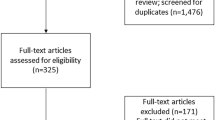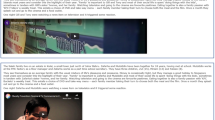Abstract
In this paper we present the current state of cultural diversity education for undergraduate medical students in three English-speaking countries: the United Kingdom (U.K.), United States (U.S.) and Canada. We review key documents that have shaped cultural diversity education in each country and compare and contrast current issues. It is beyond the scope of this paper to discuss the varied terminology that is immediately evident. Suffice it to say that there are many terms (e.g. cultural awareness, competence, sensitivity, sensibility, diversity and critical cultural diversity) used in different contexts with different meanings. The major issues that all three countries face include a lack of conceptual clarity, and fragmented and variable programs to teach cultural diversity. Faculty and staff support and development, and ambivalence from both staff and students continue to be a challenge. We suggest that greater international collaboration may help provide some solutions.
Similar content being viewed by others
References
The Henry J Kaiser Family Foundation. Compendium of Cultural Competence Initiatives in Health Care. California: The Henry J Kaiser Family Foundation; 2003.
Dogra N. Cultural Competence or cultural sensibility? A comparison of two ideal type models to teach cultural diversity to medical students. International Journal of Medicine. 2003;5(4):223–31.
Gustafson DL. Are sensitivity and tolerance enough? Comparing two theoretical approaches to caring for newcomer women with mental health problems. In: Guruge S, Collins E, eds. Working with Immigrant Women. Issues and Strategies for Mental Health Professionals. Toronto: Centre for Addiction and Mental Health; 2008:39–63.
Dunnell, K. Diversity and different experiences in the U.K. National Statistician’s Annual Article on Society. London: Office of National Statistics; 2008. Available at: http://www.statistics.gov.uk/articles/nojournal/NSA_article.pdf. Accessed October 19, 2009.
General Medical Council. Tomorrow’s Doctors. London: General Medical Council; 1993.
Dogra N, Williams R. Applying policy and evidence in developing cultural diversity teaching in undergraduate medical education in the U.K. Evidence & Policy. 2006;2(4):463–77.
NHS Institute of Innovation and Improvement. Medical Leadership Competency Framework: Enhancing engagement in medical leadership. University of Warwick: NHS Institute of Innovation and Improvement; 2008.
Race Relations Amendment Act. London: HMSO; 2000.
Conning S, Hooper A, Turner M. Reports of new ideas in medical education: Educating tomorrow’s doctors for today’s world: introducing a new diversity course for year 2 medical students in a community-based setting. Med Educ. 2001;35(11):1071–90.
Dogra N. The development and evaluation of a programme to teach cultural diversity to medical undergraduate students. Med Educ. 2001;35(3):232–41.
Dogra N, Conning S, Gill PS, Spencer J, Turner M. Teaching of cultural diversity in medical schools in the United Kingdom and Republic of Ireland: cross sectional questionnaire survey. BMJ. 2005;330(7488):403–4.
Bentley P, Jovanovic A, Sharma P. Cultural diversity training for U.K. healthcare professionals: a comprehensive nationwide cross-sectional survey. Clin Med. 2008;8(5):493–7.
Roberts JH, Sanders T, Wass V. Students’ perceptions of race, ethnicity and culture at two U.K. medical schools: a qualitative study. Med Educ. 2008;42:45–52.
Dogra N, Giordano J, France N. Cultural diversity teaching and issues of uncertainty: the findings of a qualitative study. BMC Med Educ. 2007;7:8.
Dogra N, Karnik N. A comparison between U.K. and U.S. medical student attitudes towards cultural diversity. Med Teach. 2004;26(8):703–8.
U.S. Department of Health and Human Services. Report of the Secretary's Task Force on Black & Minority Health, Volume I: Executive Summary. Washington: U.S. Government Printing Office; 1985. August.
Physicians for Human Rights. The Right to Equal Treatment: An action plan to end racial and ethnic disparities in clinical diagnosis and treatment in the United States. A report by the Panel on Racial and Ethnic Disparities in Medical Care convened by Physicians for Human Rights. September 2003. Available at: http://physiciansforhumanrights.org/library/documents/reports/report-rightequaltreat-2003.PDF. Accessed October 19, 2009.
Smedley BD, Stith AY, Nelson AR, eds. Unequal treatment: confronting racial and ethnic disparities in health. Washington DC: National Academies Press; 2002.
Office of Minority Health. National Standards for Culturally and Linguistically Appropriate Services in Health Care. U.S. Department of Health and Human Services; March 2001. Available at: http://www.omhrc.gov/assets/pdf/checked/finalreport.pdf. Accessed October 19, 2009.
Salas-Lopez D, Holmes L, Mouzon DM, Soto-Greene M. Cultural competency in New Jersey: evolution from planning to law. J Health Care Poor Underserved. 2007;18:34–43.
Liaison Committee on Medical Education. Functions and Structure of a Medical School: Standards for Accreditation of Medical Education Programs Leading to the M.D. degree; 2007. Available at: http://www.lcme.org/functions2007jun.pdf. Accessed October 19, 2009.
Association of American Medical College (AAMC) Tool for Assessing Cultural Competency Training. Available at: www.aamc.org/meded/tacct/start/htm. Accessed October 19, 2009.
Accreditation Council for Graduate Medical Education. Common Program Requirements; February 2002.
American Medical Association. Minority Affairs Consortium. Policy Compendium; October 2007. Available at: http://www.ama-assn.org/ama1/pub/upload/mm/19/maccompendfinal.pdf. Accessed October 19, 2009.
Smith WR, Betancourt JR, Wynia MK, et al. Recommendations for Teaching about Racial and Ethnic Disparities in Health and Health Care. Ann Intern Med. 2007;147(9):654–65.
Wyatt GE, Bass BA, Powell GJ. A survey of ethnic and sociocultural issues in medical school education. Med Educ. 1978;53(8):627–32.
Lum CK, Korenman SG. Cultural-sensitivity training in U.S. medical schools. Acad Med. 1994;69(3):239–41.
Louden RF, Anderson PM, Paranjit S, Greenfield SM. Educating medical students for work in culturally diverse societies. JAMA. 1999;282(9):875–80.
Flores G, Gee D, Kastner B. The teaching of cultural issues in U.S. and Canadian medical schools. Acad Med. 2000;75(5):451–5.
Pena Dolhun E, Munoz C, Grumbach K. Cross-cultural education in U.S. medical schools: development of an assessment tool. Acad Med. 2003;78(6):615–2.
Lie D, Boker J, Cleveland E. Using the tool for assessing cultural competence training (TACCT) to measure faculty and medical student perceptions of cultural competence instruction in the first three years of the curriculum. Acad Med. 2006;81(6):557–64.
Rapp DE. Integrating cultural competency into the undergraduate medical curriculum. Med Educ. 2006;40:704–10.
Tervalon M. Components of culture in health for medical students' education. Acad Med. 2003;78(6):570–6.
Crandall SJ, George G, Marion GS, Davis S. Applying theory to the design of cultural competency training for medical students: a case study. Acad Med. 2003;78(6):588–94.
Kripalani S, Bussey-Jones J, Katz MG, Genao I. A prescription for cultural competence in medical education. J Gen Intern Med. 2006;21:1116–20.
Health Canada. Social Accountability. A Vision for Canadian Medical Schools. Ottawa: Health Canada; 2002.
Azad N, Chery S, Dollin J, Power B. Cultural Sensitivity Training in Canadian Undergraduate Medical Schools. Acad Med. 2002;77(3):222–8.
Gustafson DL, Reitmanova S. How are we "doing" cultural diversity? A look across English Canadian undergraduate medical school programs. Medical Teacher. In press.
Frank B, MacLeod A. Beyond the ‘four Ds of Multiculturalism’: taking difference into account in medical education. Med Educ. 2005;39(12):1178–9.
Dogra N. The learning and teaching of cultural diversity in undergraduate medical education in the UK [dissertation]. Leicester: University of Leicester; 2004.
De Leon Siantz ML. Leading Change in Diversity and Cultural Competence. J Prof Nurs. 2008;24(3):167–71.
Association of American Medical Colleges. Canadian Medical School Graduate Questionnaire. Division of Medical Education; 2007.
Murray-Garcia JL, Garcia JA. The institutional context of multicultural education: what is your institutional curriculum? Acad Med. 2008;87(7):646–52.
Huang G, Reynolds R, Candler C. Virtual patient simulation at U.S. and Canadian medical schools. Acad Med. 2007;82(5):446–51.
Dogra N, Wass V. Can we assess students’ awareness of cultural diversity? A qualitative study of stakeholders’ views. Med Educ. 2006;40(7):682–90.
Association of American Medical Colleges. Graduate Questionnaire: Student Survey on Priorities in Medical Education. Division of Medical Education; 2008.
Dogra N. The views of medical education stakeholders on guidelines for cultural diversity teaching. Med Teach. 2007;29(2–3):e41–6.
Acknowledgements
All three authors have contributed to the writing of the paper. Drs. Carter-Pokras and Dogra gratefully acknowledge funding from the National Heart Lung and Blood Institute (NHLBI K07HL079255). This paper stems from an earlier workshop: “International perspectives on cultural competence training: assessment and evaluation of cultural competence education in the U.K., U.S. and Canada: Discussion of Theory and Practice” held at the 12th International Ottawa Conference on Clinical Competence in New York City on May 23, 2006.
Conflict of Interest Statement
Ethical approval was not sought for this review and there is no conflict of interest for any of the authors.
Author information
Authors and Affiliations
Corresponding author
Rights and permissions
About this article
Cite this article
Dogra, N., Reitmanova, S. & Carter-Pokras, O. Teaching Cultural Diversity: Current Status in U.K., U.S., and Canadian Medical Schools. J GEN INTERN MED 25 (Suppl 2), 164–168 (2010). https://doi.org/10.1007/s11606-009-1202-7
Published:
Issue Date:
DOI: https://doi.org/10.1007/s11606-009-1202-7




